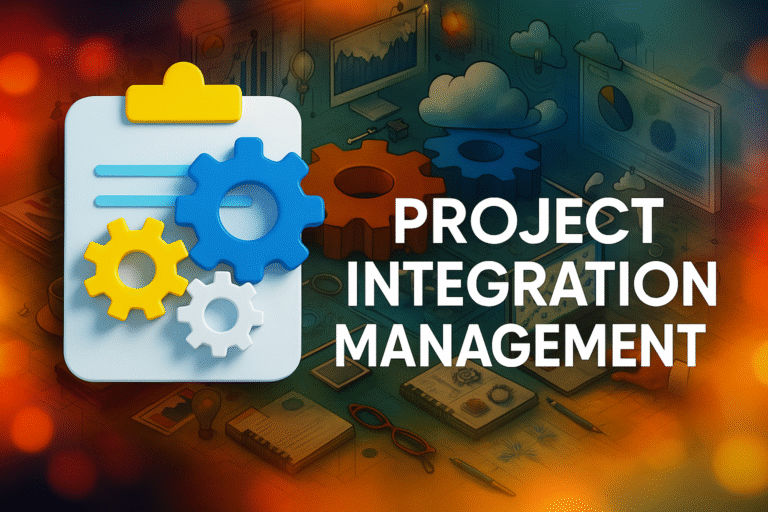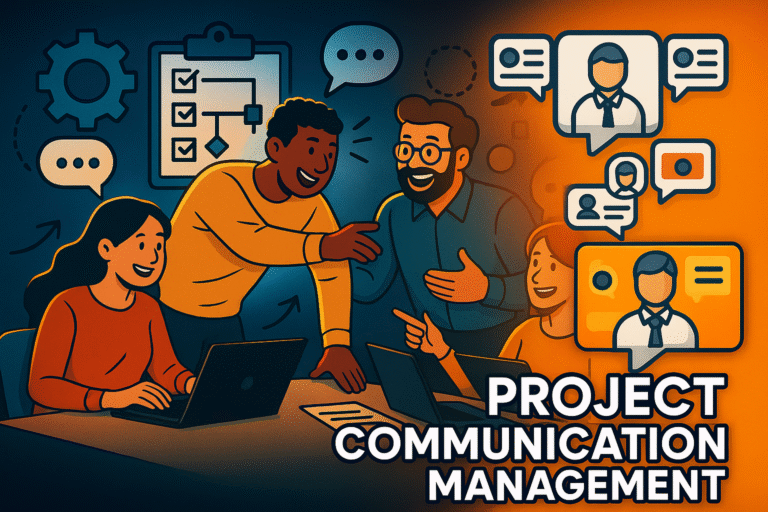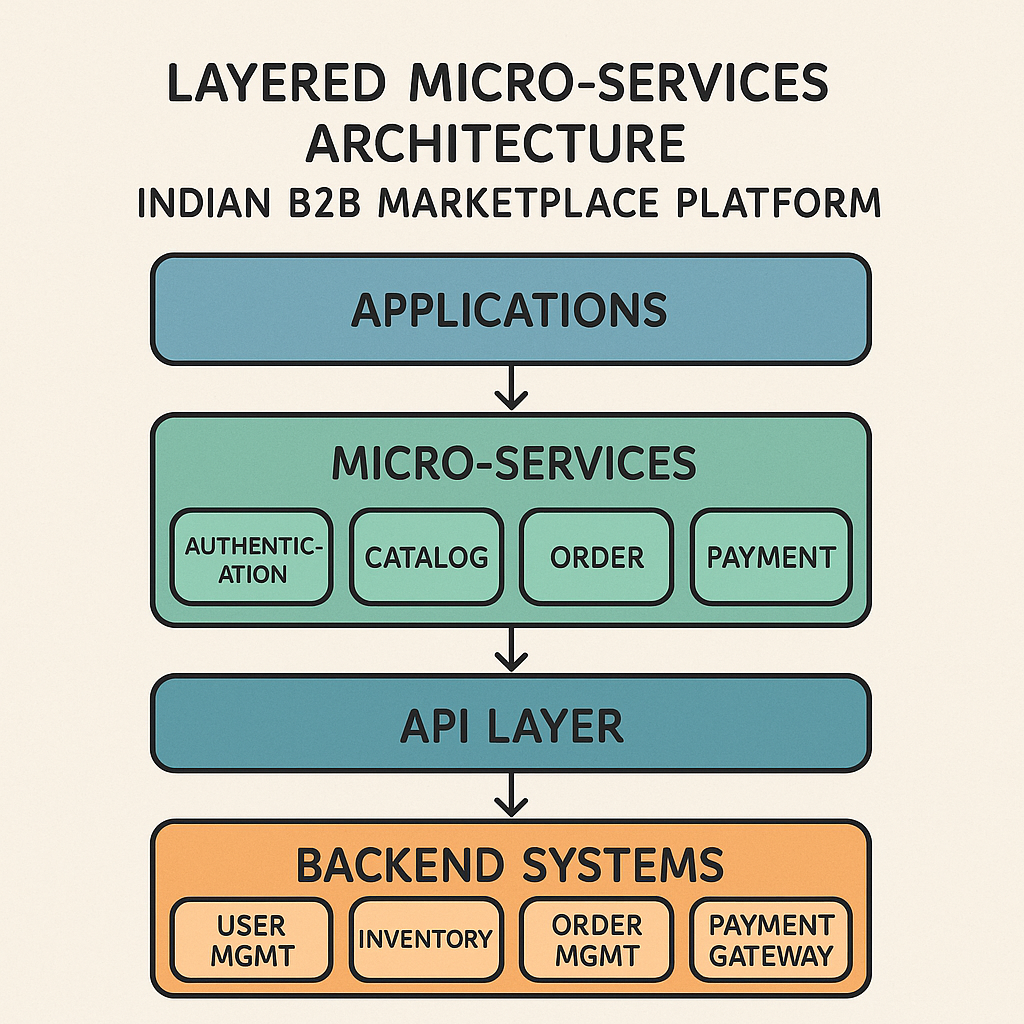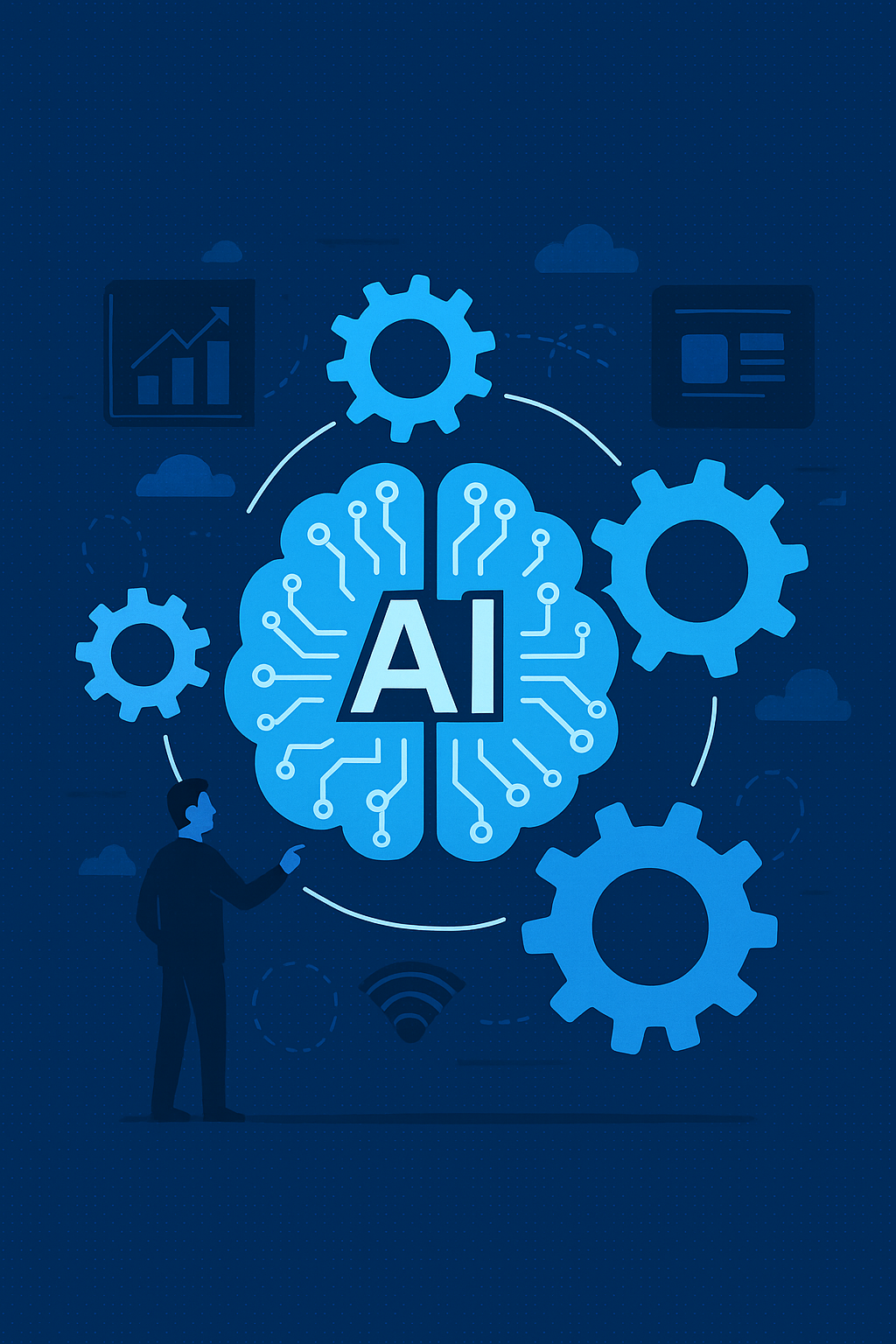Agile Scrum Mastery: The Field-Tested Playbook for Organizational Transformation
When we combine Scrum’s laser-focused framework with servant leadership, cultural change, and data-driven iteration, we unlock a repeatable system for faster delivery, happier customers, and teams that love coming to work. Use this playbook as your launch pad to guide a successful Agile transformation whether you manage a single squad, an enterprise portfolio, or an entire program office.
1. Why Agile (Still) Wins in 2025 +
Before we dive into frameworks and ceremonies, let us remind ourselves why thousands of companies from Netflix to NASA switched from heavyweight project plans to Agile scrum:
| Waterfall Pain | Agile Gain |
| Rigid plans crumble under change | Iterative releases adapt weekly |
| Delayed customer feedback | Real-time feedback every sprint |
| Big-bang testing = late surprises | Continuous quality built-in |
| Morale dips as deadlines slip | Teams self-organize & own outcomes |
Key takeaway: In volatile markets, the only sustainable edge is how quickly we learn and pivot.
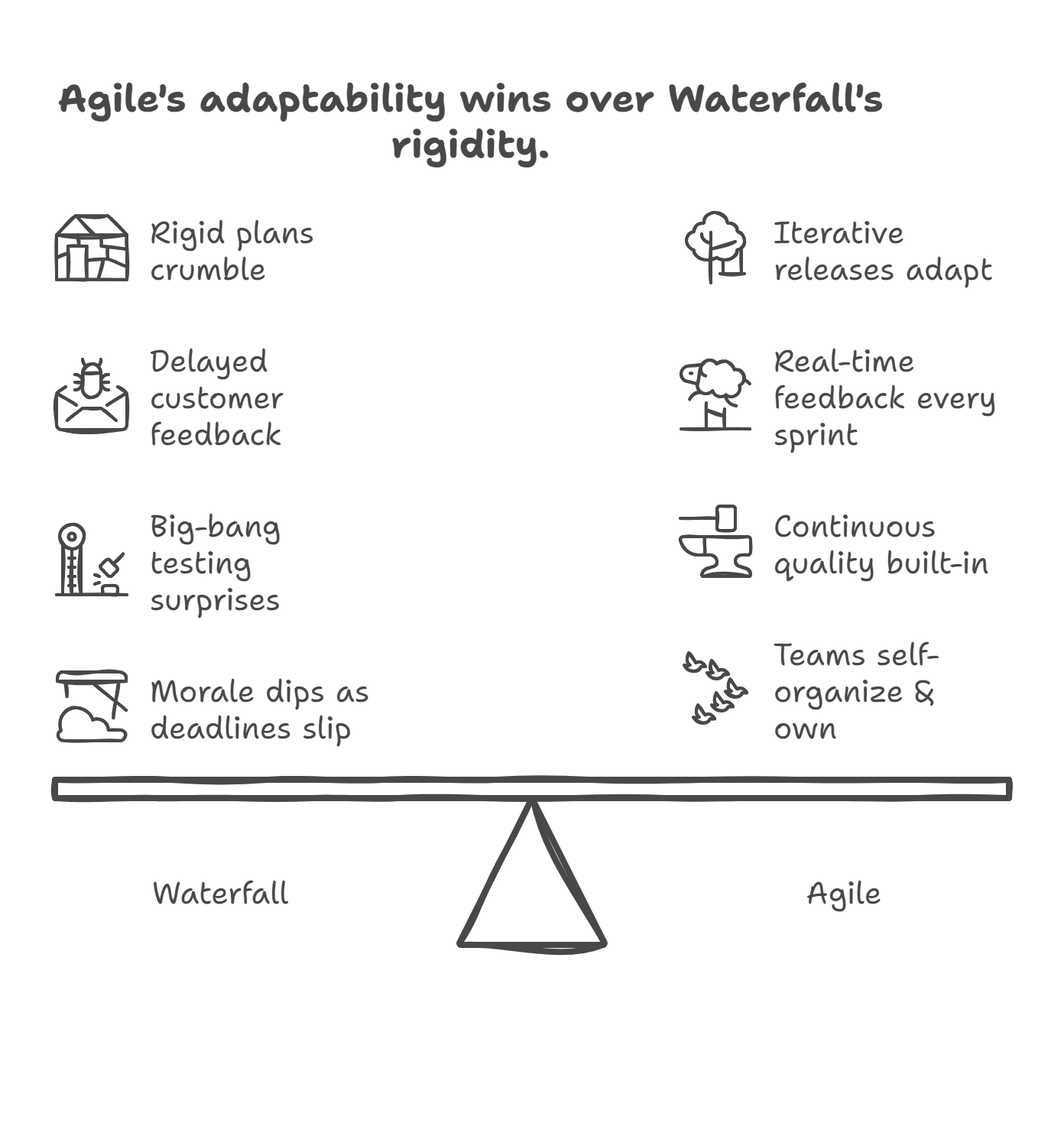
2. The Scrum Framework in 90 Seconds
- Roles
- Product Owner (PO) – owns backlog & ROI.
- Scrum Master (SM) – servant-leader, removes impediments.
- Developers – multi-disciplinary, build the Increment.
- Artifacts
- Product Backlog – sole source of truth
- Sprint Backlog – work committed for the sprint.
- Increment – potentially shippable value.
- Events
| Event | Time-box | Purpose |
| Sprint Planning | 4–8 h | Set Sprint Goal, select backlog items |
| Daily Scrum | 15 min | Re-plan next 24 h |
| Sprint Review | 1–4 h | Inspect Increment with stakeholders |
| Sprint Retro | 1–3 h | Improve people, process, tools |
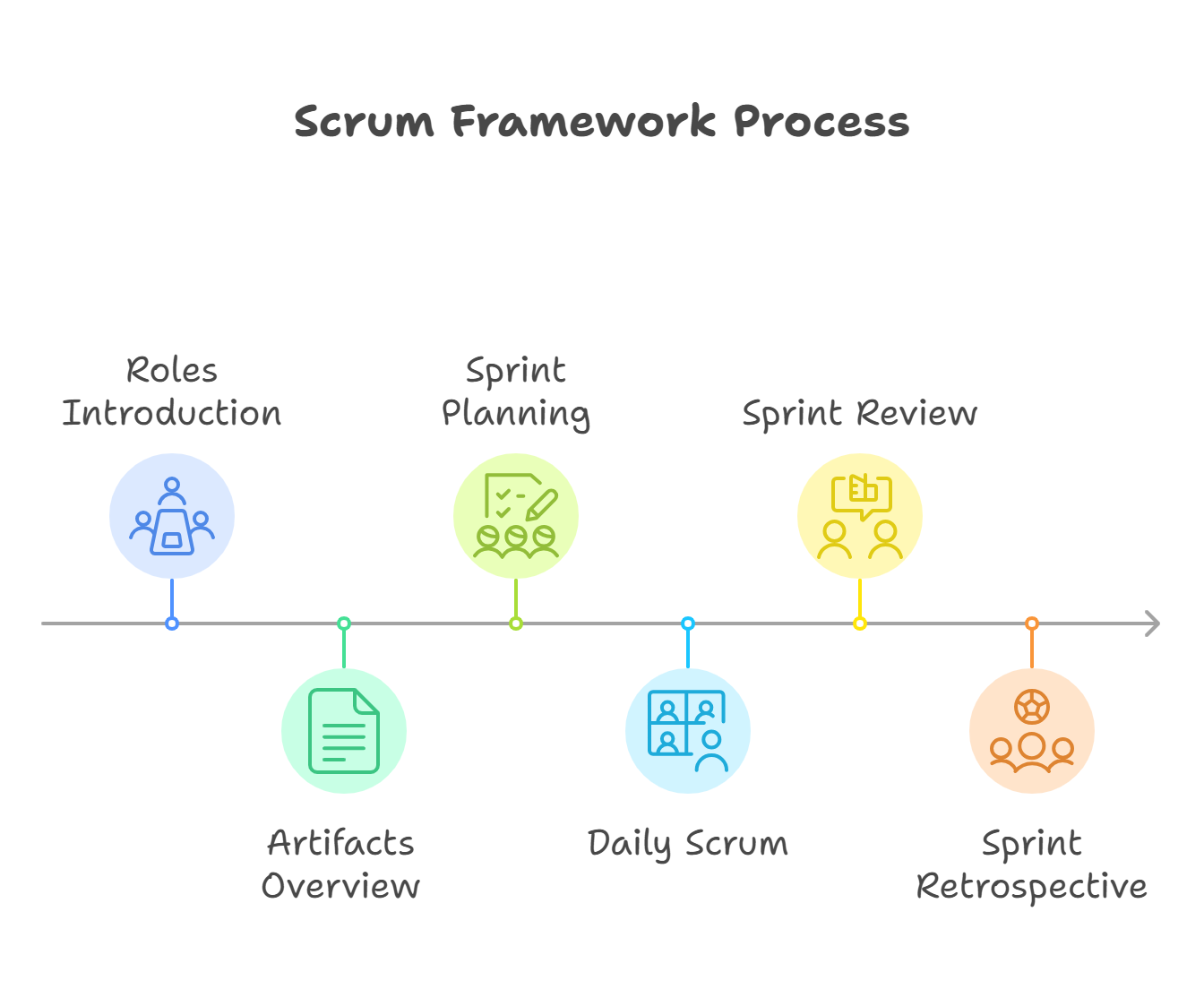
3. Role Deep-Dive: From Project Manager to Scrum Master
Traditional PMs: plan → execute → control.
Scrum Masters: coach → serve → enable.
| Competency | PM Focus | SM Focus |
| Planning | MS Project Gantt | Backlog refinement & forecasting |
| Communication | Status reports | Radical transparency, information radiators |
| Risk | Mitigation plans | Short cycles + continuous integration |
| Authority | Command & control | Servant leadership & facilitation |
Shift you will need to make trade “controlling the work” for “optimizing the system.”
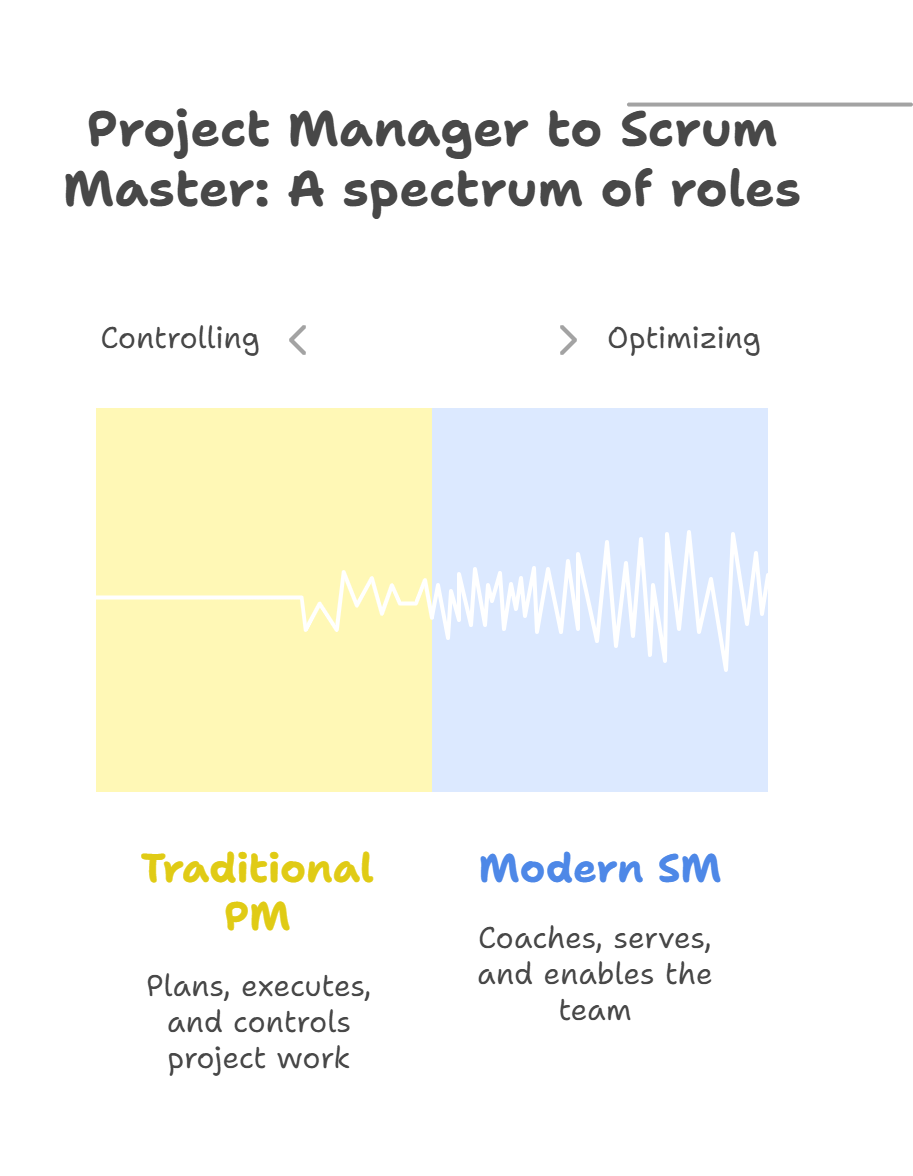
4. Building a High-Performance Scrum Team
“Culture eats strategy for breakfast, lunch, and dinner.” Peter Drucker
4.1 Start with Team DNA
- Cross-functional: Dev, QA, UX, DevOps in one squad
- 2-Pizza rule: 5–9 core members
- Shared Definition of Done: code, tests, docs, security checks.
4.2 Working Agreements (Launch Week Exercise)
- Communication rhythms (Slack, stand-ups)
- Pull vs. push work (no top-down task assignments)
- Code review etiquette (blameless & constructive)
- Decision filter → “What problem, for whom, why now?”
4.3 Psychological Safety Hacks
- Rotate retro facilitators monthly.
- Celebrate learning KPIs (experiments run) alongside output.
- Pair “quiet” teammates with “vocal” mentors in refinement.
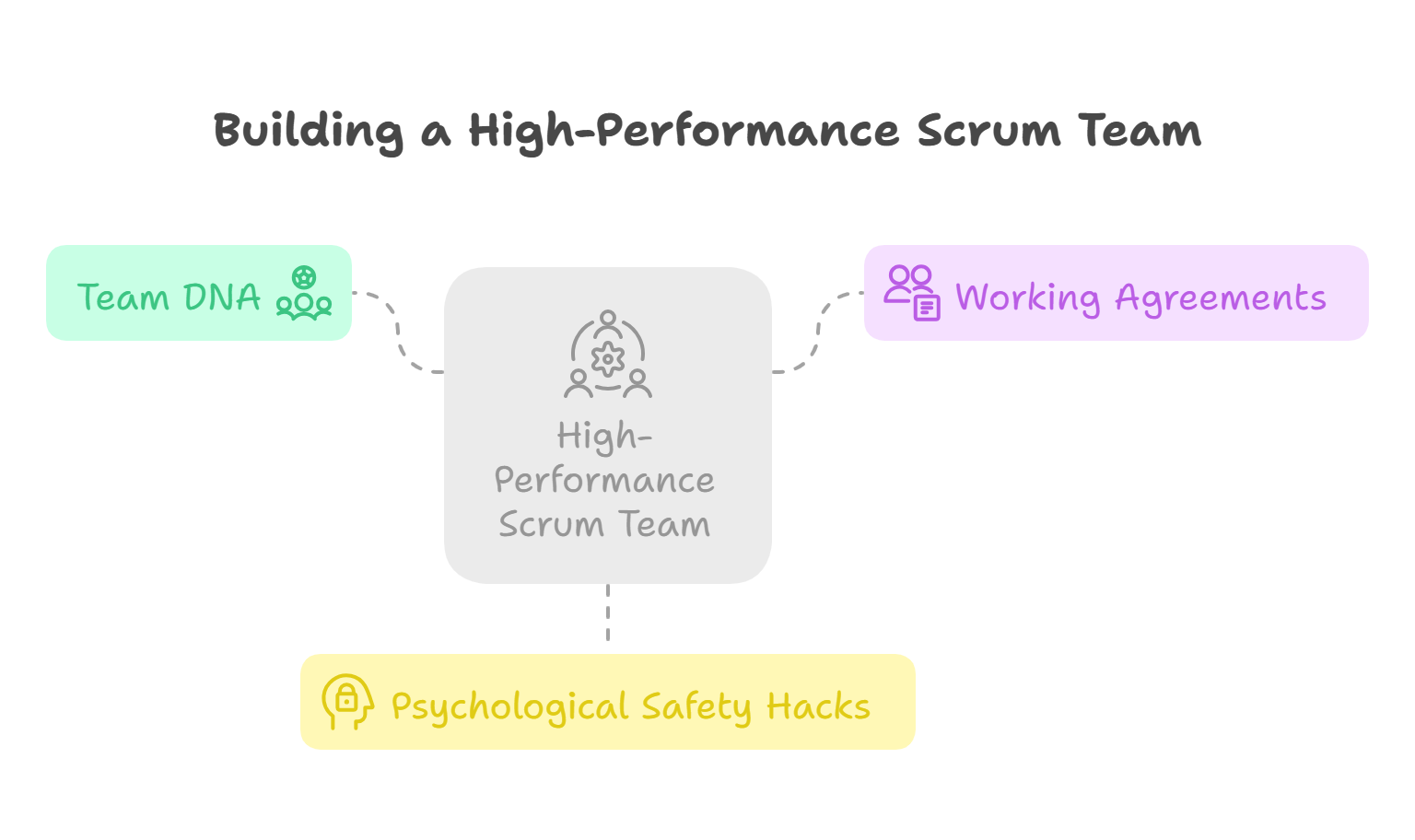
5. Agile Transformation Framework (MDPI)
- Mindset – Train leaders first; align values.
- Design – Restructure around value streams, not silos.
- Process – Standardize Scrum baseline, automate CI/CD
- Insights – Dashboards on velocity, cycle time, NPS
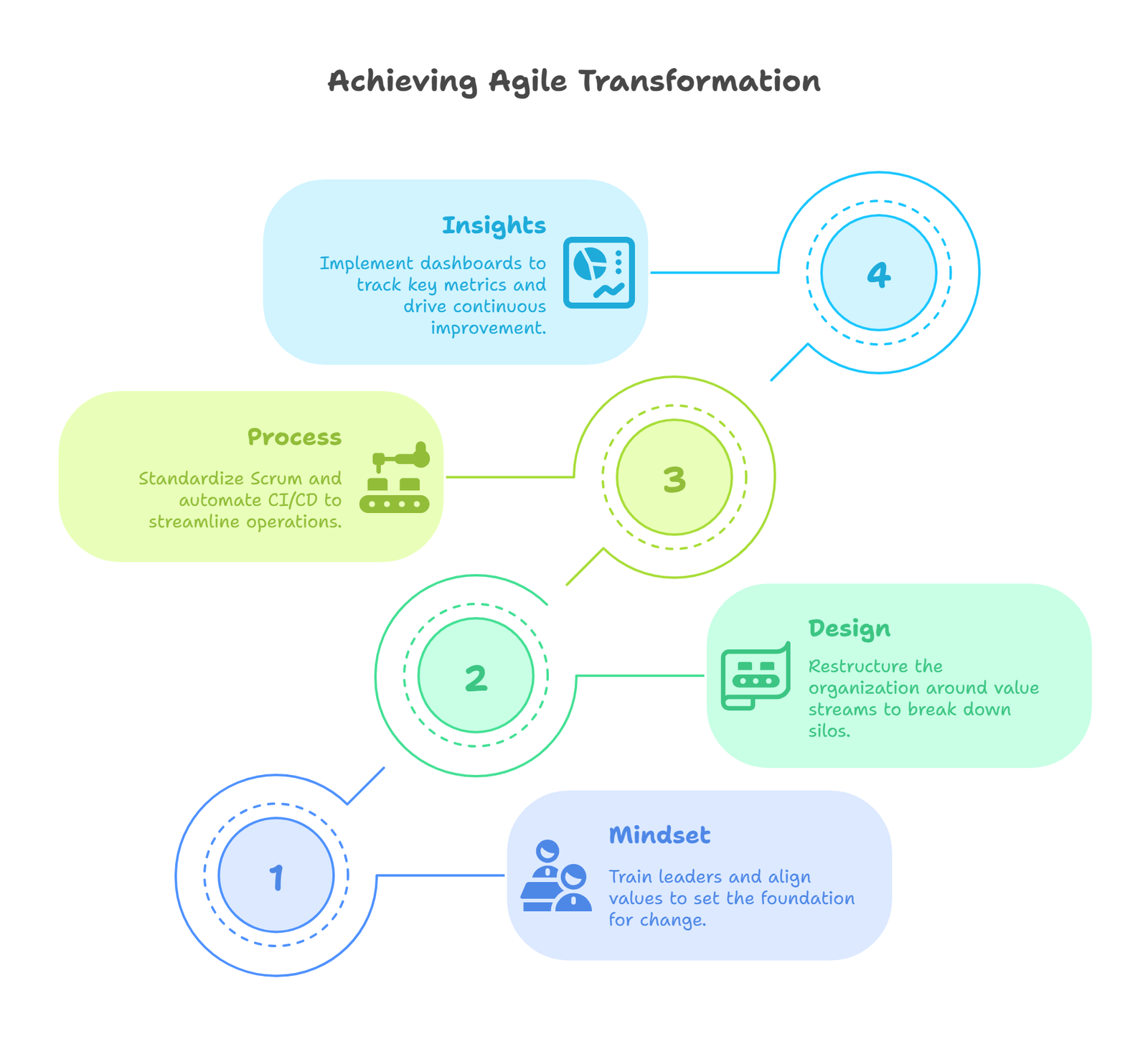
Use quarterly health checks to see which pillar is lagging and adjust investments accordingly.
6. Crafting the Roadmap: 5 Steps
| Phase | Deliverable |
| Vision | One-page North Star (“24-hour idea-to-test pipeline”) |
| Pilot | 2 cross-functional teams, 2 sprints, visible metrics |
| Scale | Add teams; sync cadences via Scrum of Scrums |
| Embed | Update HR, budgeting, compliance processes |
| Optimize | Innovation labs, hack-days, experimentation funding |
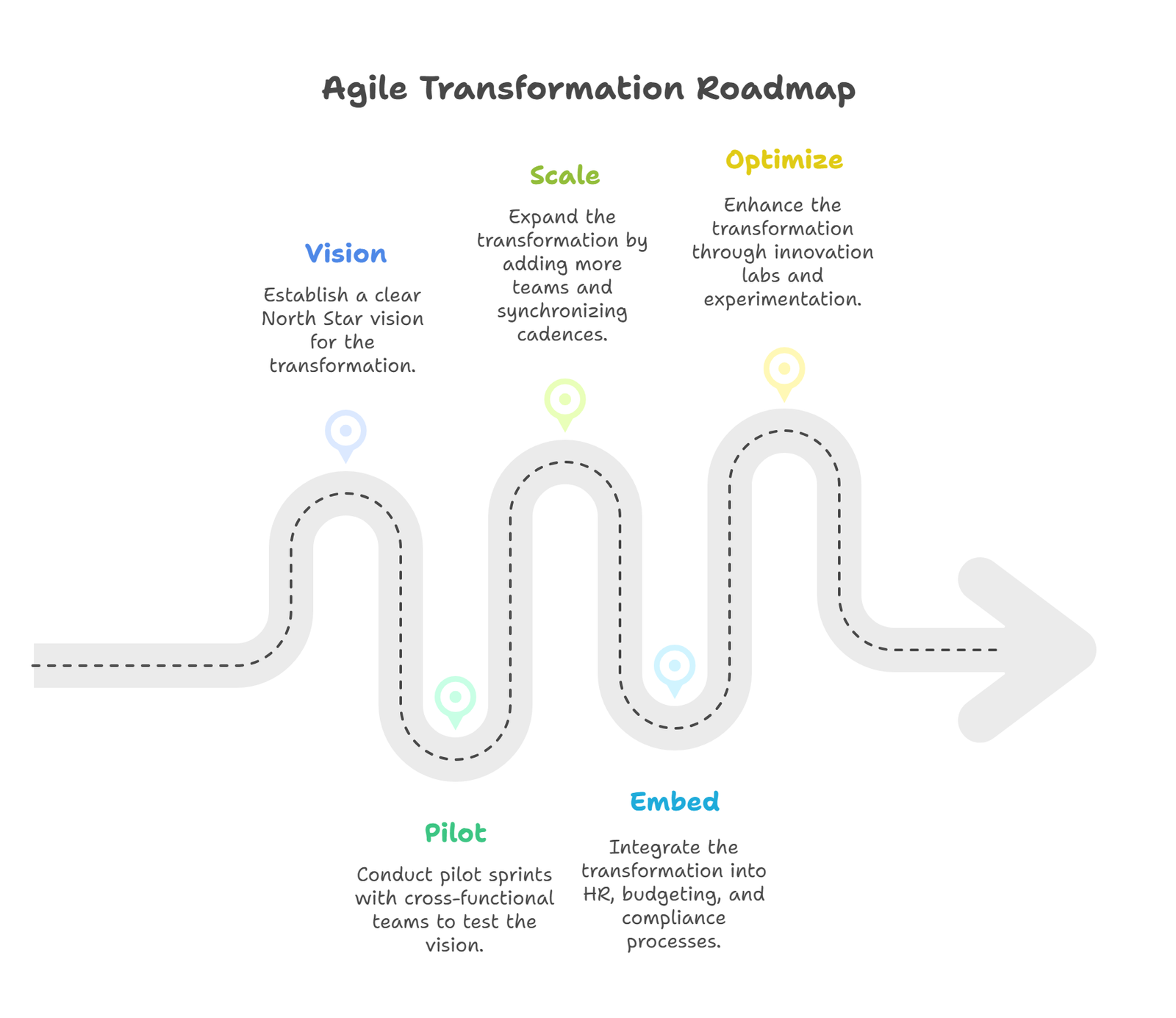
7. Change Management: Turning Resistance into Resilience
Common Pushbacks
- “I’ll lose control of my budget.”
- “My role disappears.”
- “This is for software only.”
Counter Moves
- Transparent cost models (value streams, not projects)
- Role re-mapping workshops (PM → Release Train Engineer, BA → PO proxy)
- Cross-domain case studies (marketing, HR sprints)
Pro tip: Create a Transformation Champions Network, 1 rep per department to surface impediments weekly.
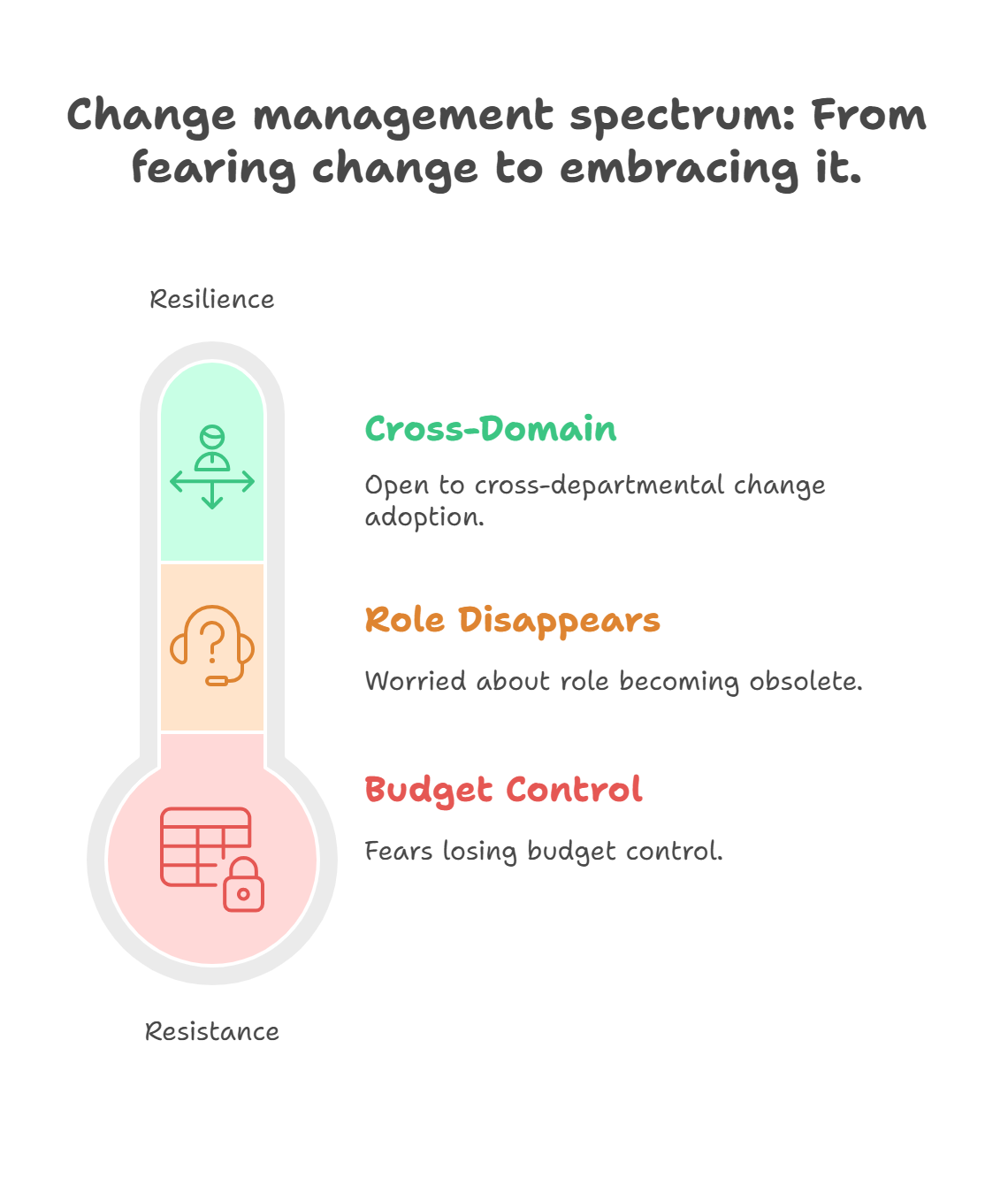
8. Metrics That Move the Needle
| Category | Metric | Target Trend |
| Delivery | Sprint velocity | Stable ↑ |
| Flow | Lead time | ↓ 20 % in 6 mo |
| Quality | Escaped defects | < 3 per release |
| Value | Feature adoption | > 70 % active use |
| People | eNPS / Team health | +10 points per quarter |
Visualize them in one radiating dashboard; review during Sprint Review so business & tech speak same language.
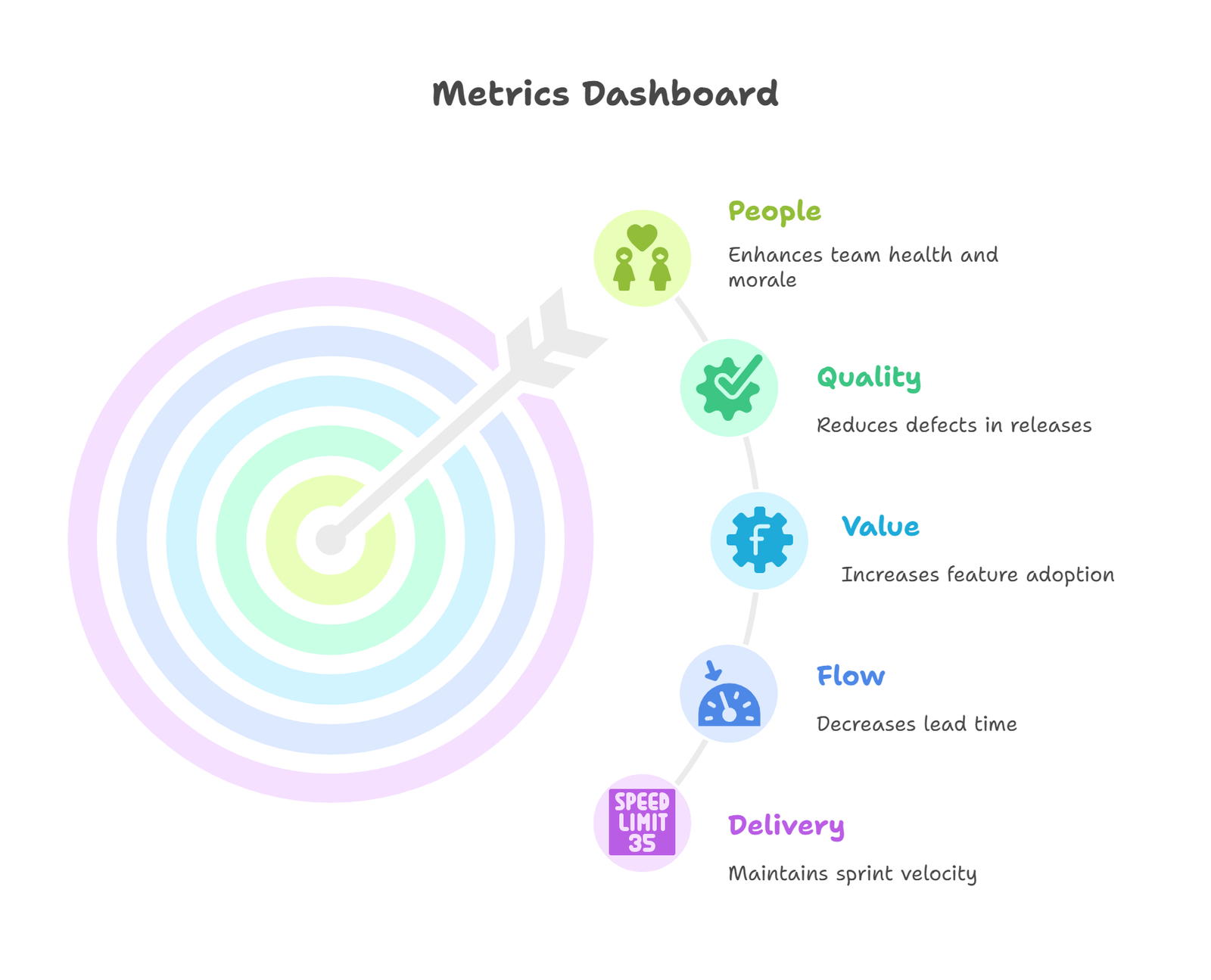
9. Scaling Patterns: SAFe, LeSS, or Nexus?
| Framework | Ideal Org Size | Standout Mechanism |
| SAFe | 100 + teams | Program Increment Planning |
| LeSS | ≤ 8 teams | Single Product Owner, one backlog |
| Nexus | 3–9 teams | Integration Team + Nexus Sprint |
Selection checklist:
- What is your compliance burden?
- Do you need portfolio-level lean budgeting?
- How many product lines share architecture?
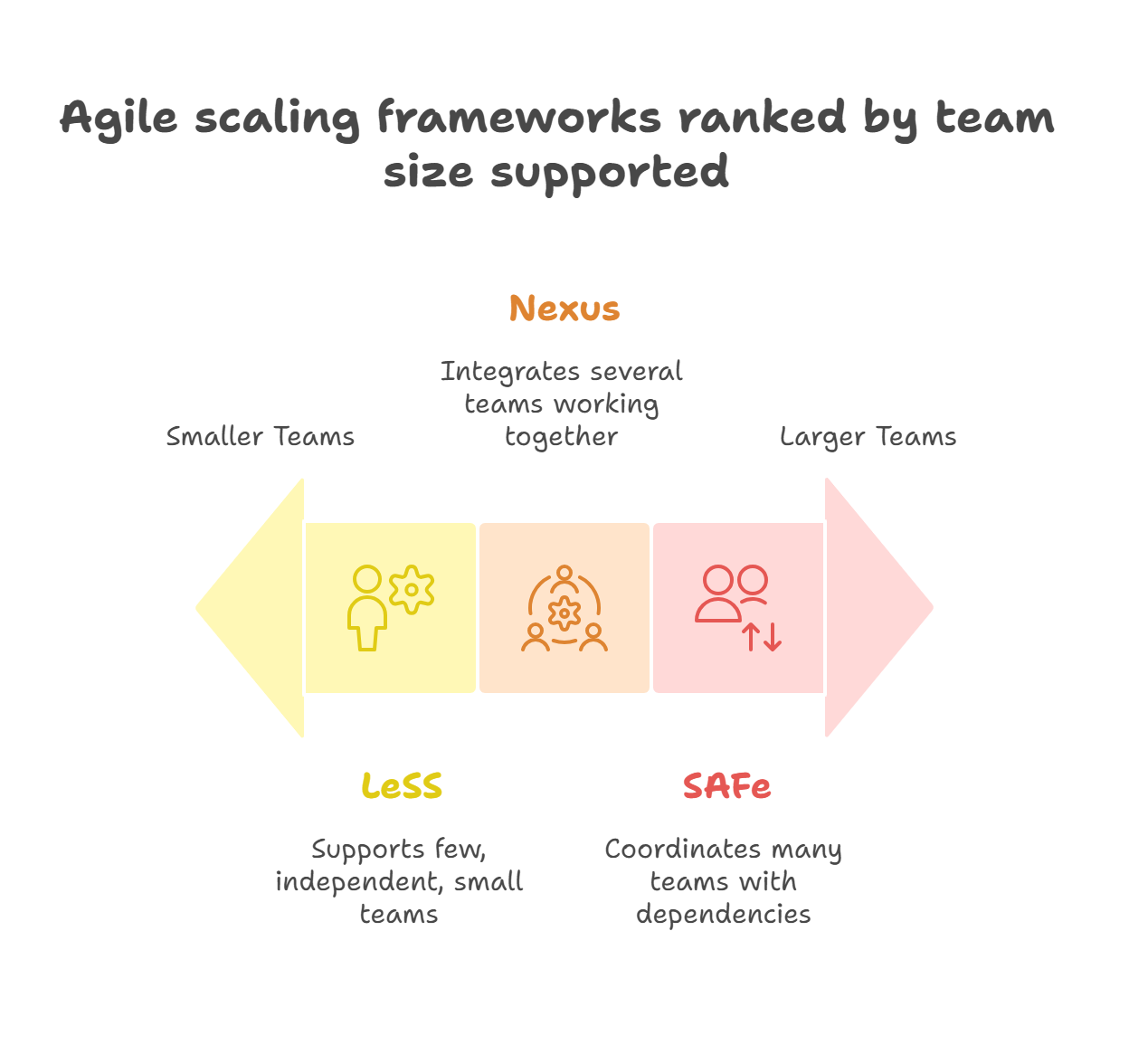
10. Tooling Cheat-Sheet
Must-Haves
- Jira / Azure Boards – backlog, sprints, burn-downs.
- GitHub Actions / GitLab CI – automate builds, evaluates, deploys.
- Miro / FigJam – remote PI planning, retros, story mapping
- Slack + Workflow Builder – auto-post deployment notes, retro actions.
Nice-to-Haves
- SonarQube – code quality gates
- LaunchDarkly – feature flags for safe releases
- Power BI / Tableau – roll-up reporting for PMO & execs.
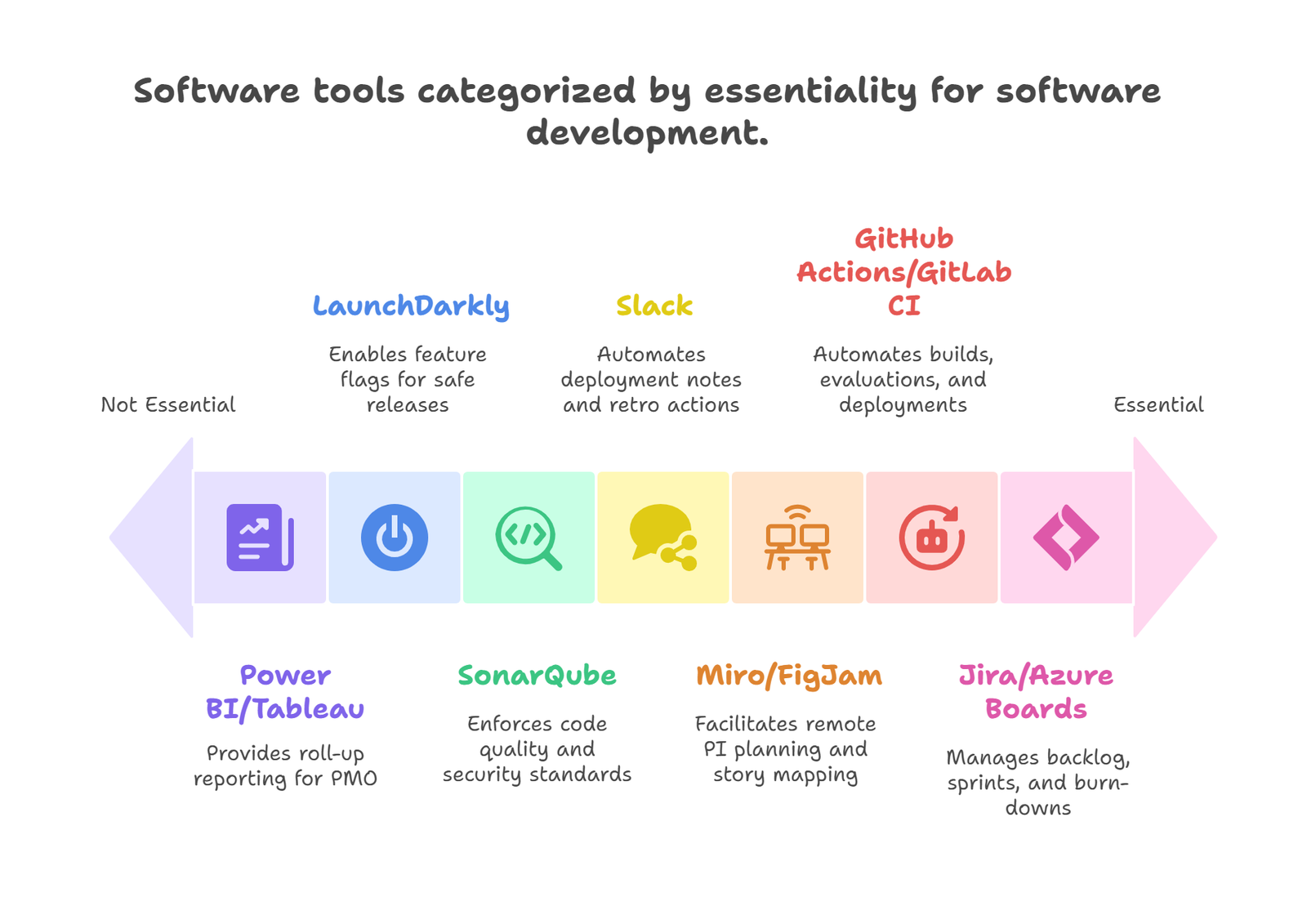
Remember: “A fool with a tool is still a fool.” Robert Cooper, Ph.D.
Nail culture first; tools amplify.
11. Continuous Improvement Engines
- Retrospectives – vary formats every sprint (Starfish, Sailboat, 4 Ls)
- Communities of Practice – 1-hour fortnightly meetups by skill (QA guild, DevOps guild)
- Agility Health Radar – quarterly survey on team maturity; set OKRs.
- Innovation Sprints – allocate 10 % capacity to hack ideas → backlog items.
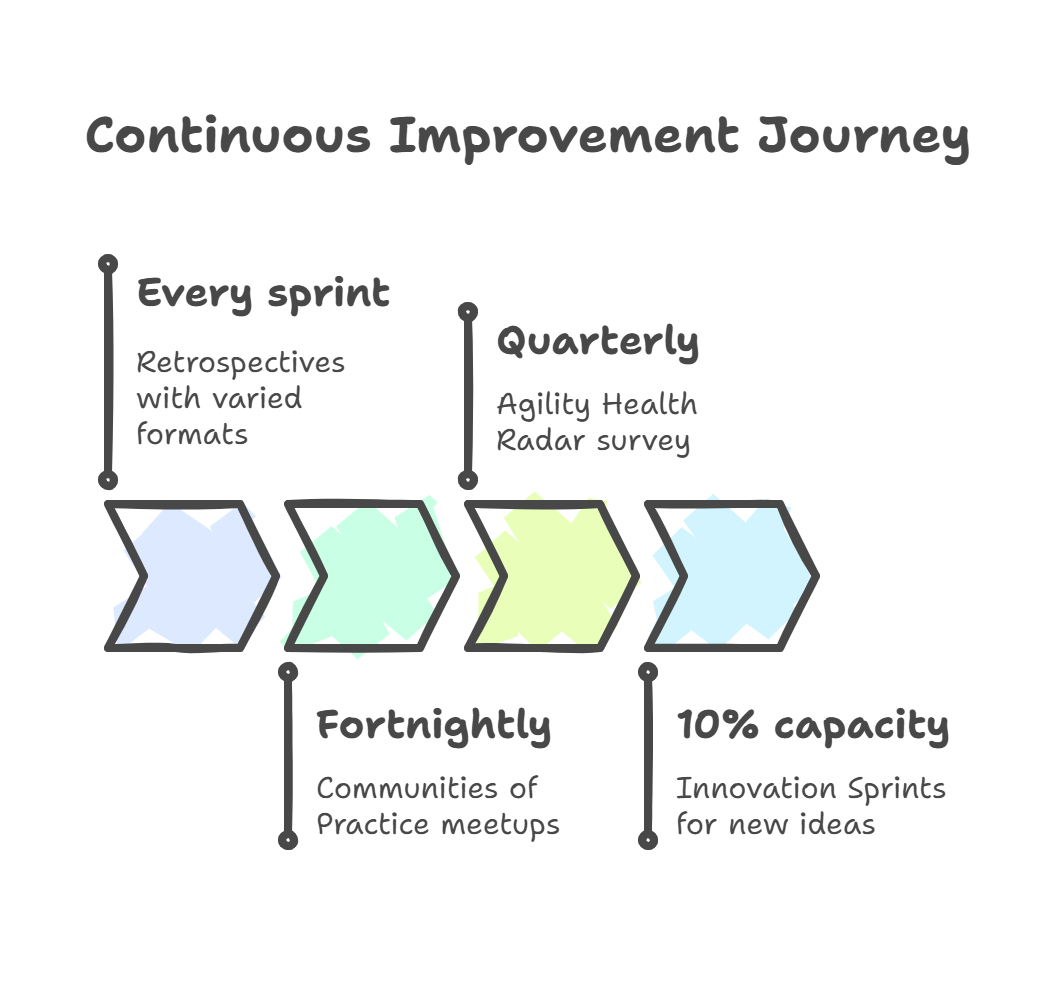
12. Leadership for the Long Haul
Servant-Leader Habits
- Daily Gemba walks – observe workflow where it happens.
- Office hours – open Zoom room for coaching requests
- Personal kanban – model transparency of your own work
- Amplify the good – shout-outs in #gratitude channel.
“When leaders show vulnerability and curiosity, teams mirror it.”
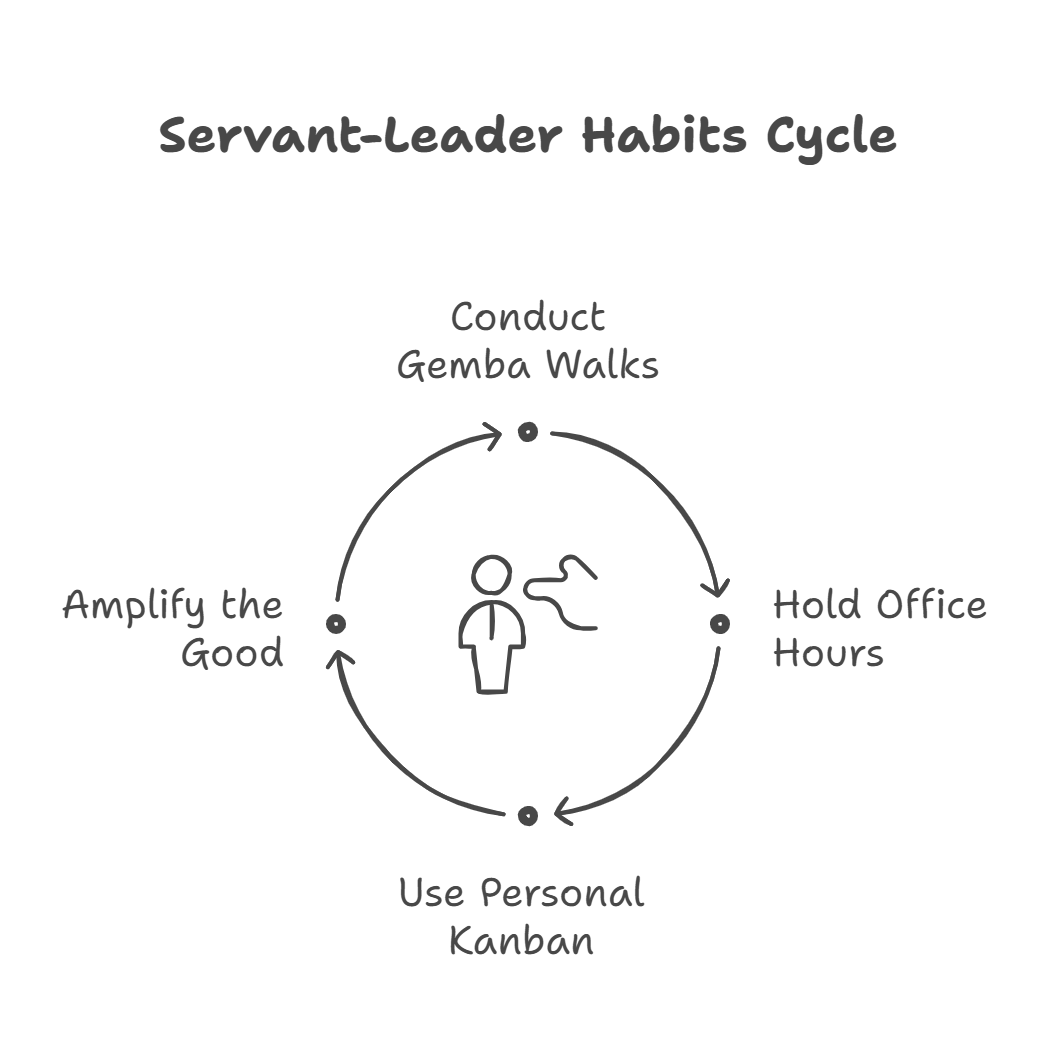
13. Future Trends to Watch
| Trend | Why It Matters |
| AI Sprint Copilots | Story-point suggestions, risk flags |
| Outcome-based Contracts | Vendors paid on value, not effort |
| Agile Data Ops | Data teams adopt Scrum + DevOps for faster analytics |
| Remote-First Rituals | Async stand-ups, timezone-spanning sprint goals |
| Ethical Backlogs | Sustainability & accessibility items prioritized like features |
Stay adaptive; what’s innovative today is table stakes tomorrow.
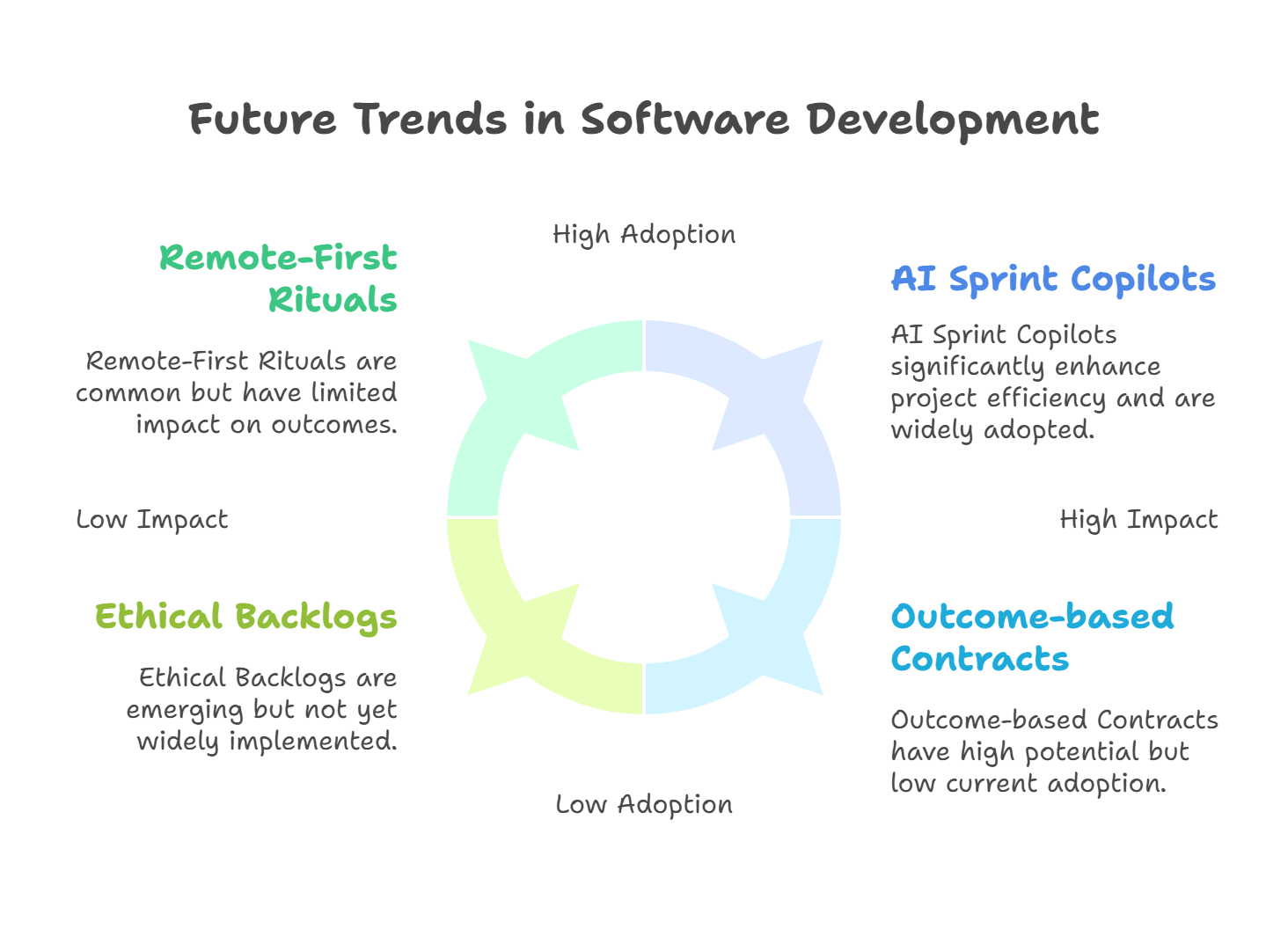
14. Common Pitfalls and How to Dodge Them
- Cargo-Cult Scrum – sticking post-its on the wall but keeping waterfall mindset.
- Over-customizing early – nail the vanilla framework before bending rules.
- Ignoring middle management – coach them; they translate vision to action.
- Metric overload – track a vital few; retire vanity measures.
- Skipping retros – the single biggest ROI ceremony; protect it fiercely.
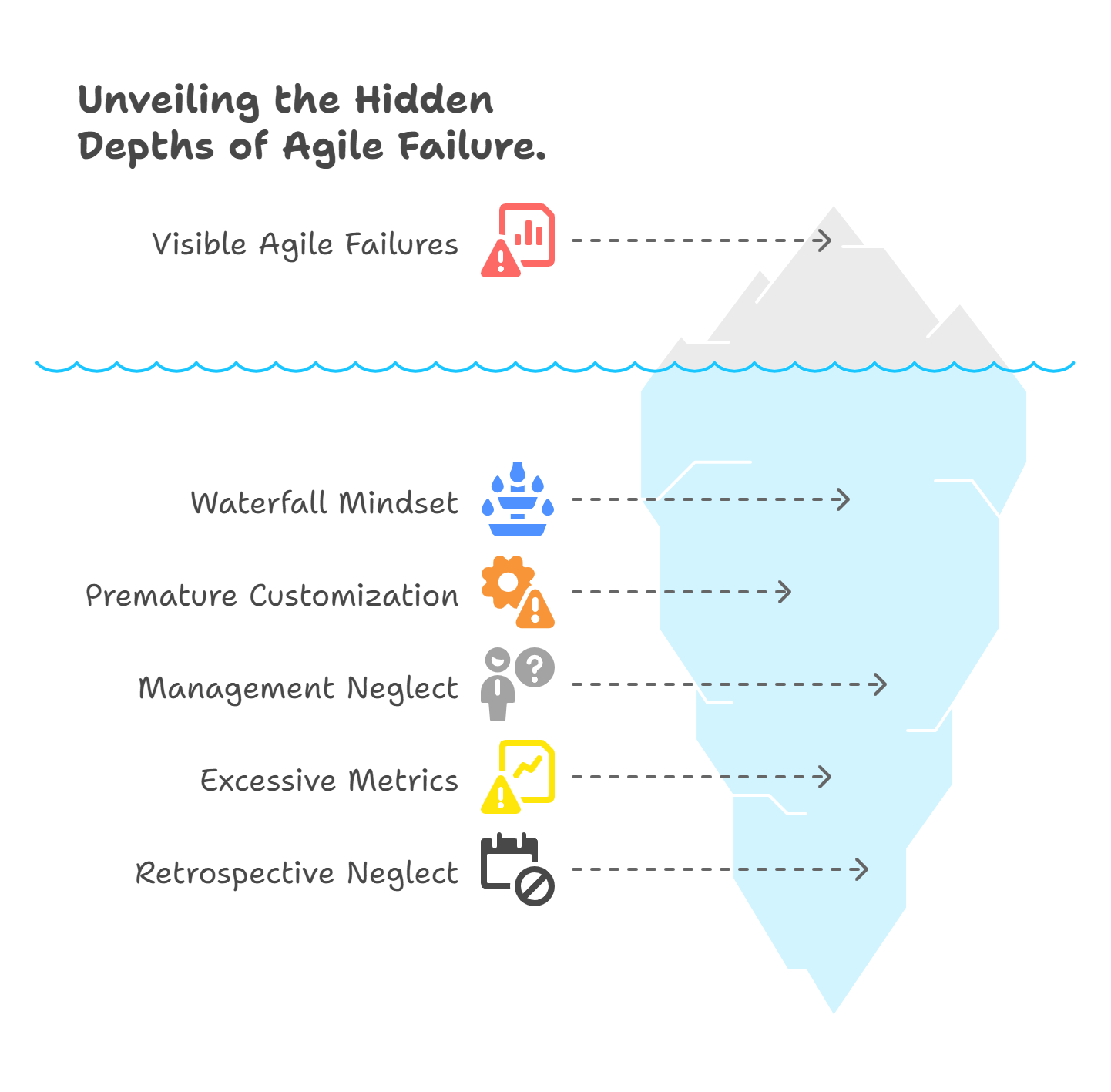
15. 30-Day Quick-Start Checklist
| Day | Action |
| 1–3 | Read Scrum Guide, align leadership on why |
| 4–10 | Select pilot product, form cross-functional team |
| 11–15 | Train PO, SM, Developers; craft working agreement |
| 16 | Sprint 0: infra set-up, backlog draft, DoD |
| 17–30 | Run Sprint 1 → Review → Retro; publish results enterprise-wide |
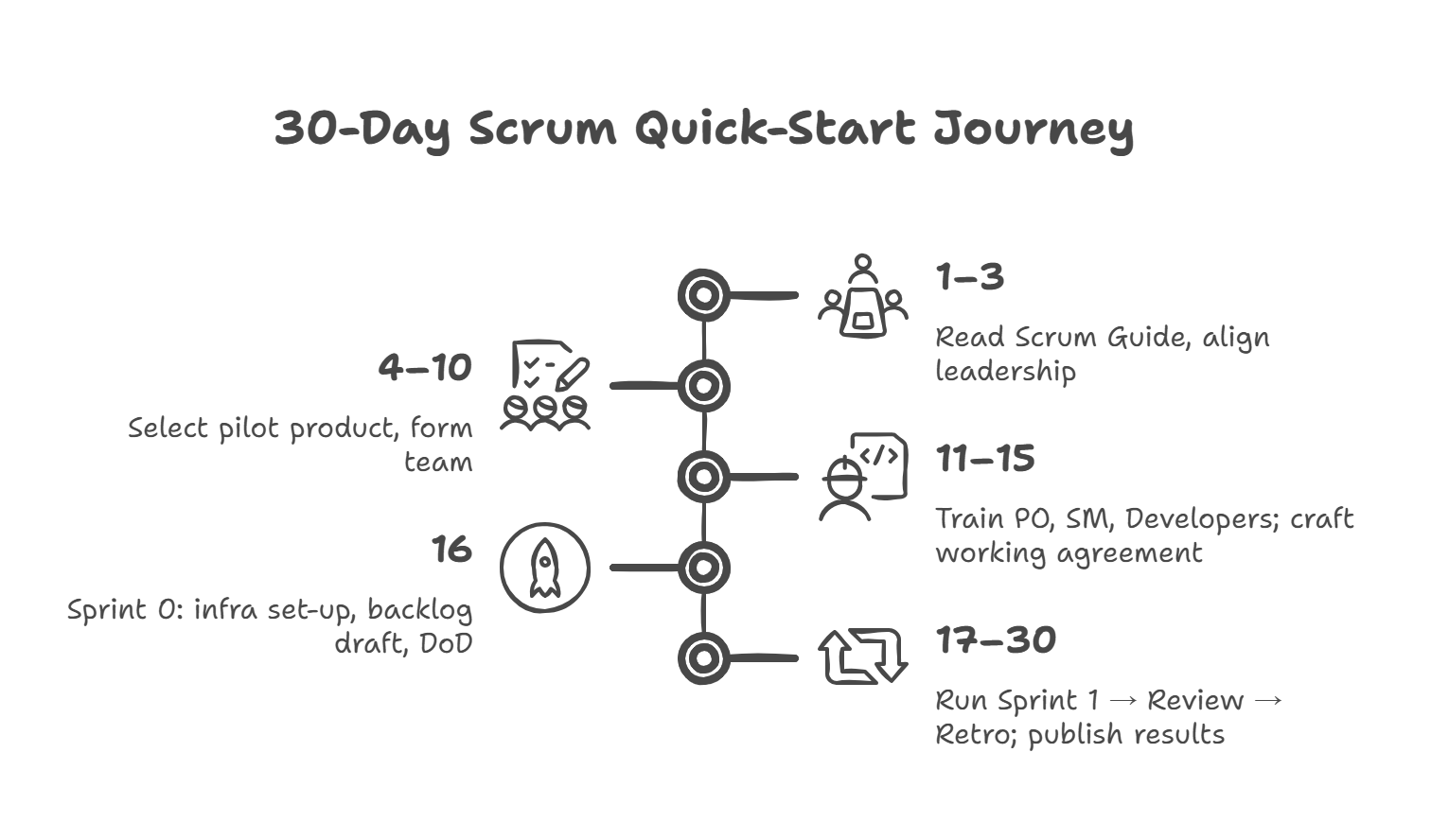
Conclusion: Your Transformation Flywheel
- Mindset → 2. Framework → 3. Transparency → 4. Fast Feedback → 5. Relentless Improvement
Repeat those five steps and watch your organization evolve from output-obsessed to outcome-driven. The Scrum Master is the catalyst of that flywheel, coaching, unblocking, and amplifying the team’s creativity.
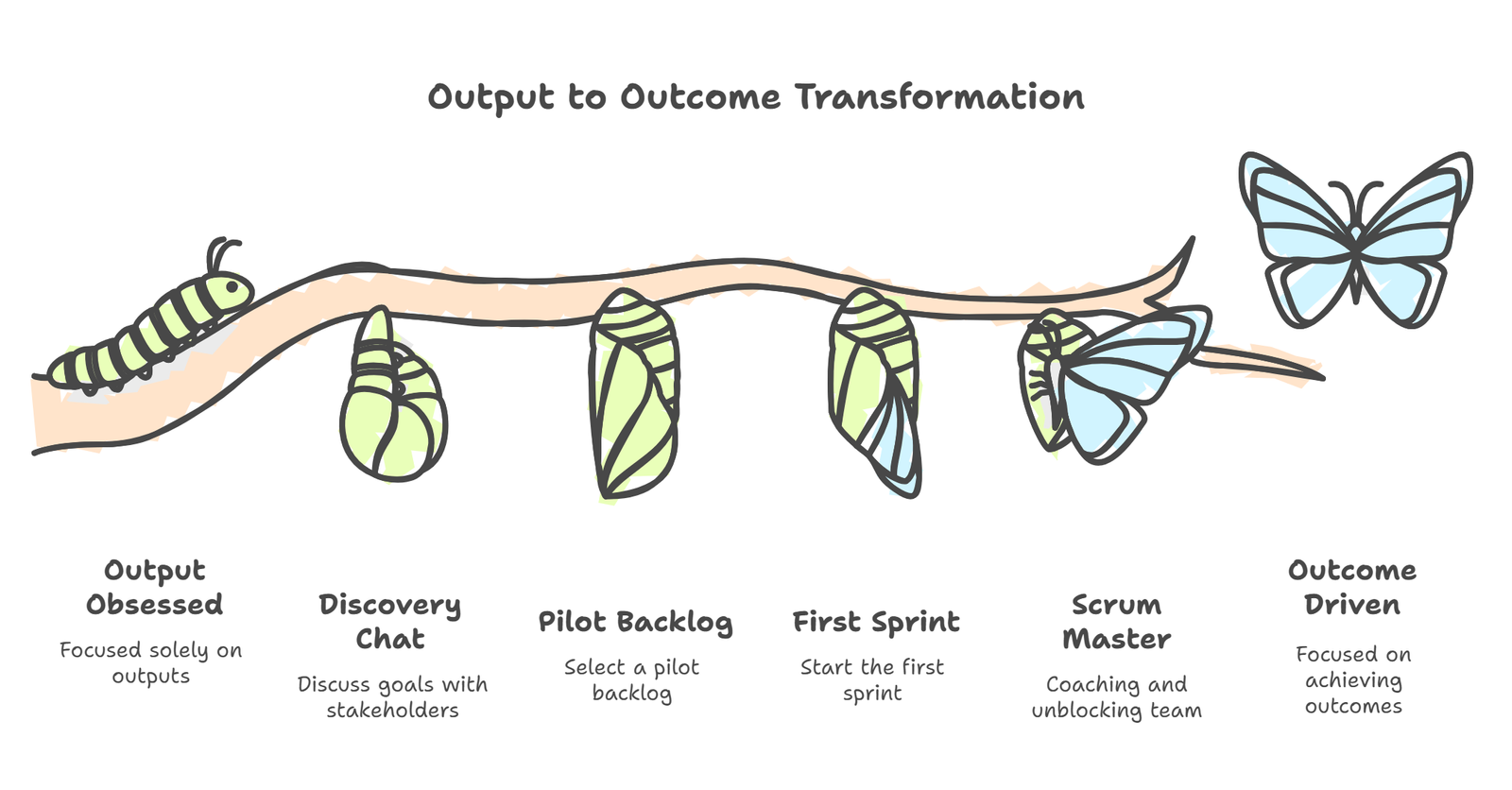
Ready to level-up? Schedule a discovery chat with your stakeholders today, pick a pilot backlog tomorrow, and begin your first sprint next Monday. Momentum beats perfection, let us ship!
References
| Source | Links |
| “17th Annual State of Agile Report – Summary & Key Findings.” pmwares, Jan 2025 – confirms 63 % Scrum usage and 26 % SAFe adoption at enterprise level. | Pmwares |
| “The Four Building Blocks of Change.” McKinsey & Company, Apr 2016 – identifies culture, skills, structure, and role-modelling as pillars of successful transformation. | McKinsey & Company |
| “Understand Team Effectiveness (Project Aristotle).” Google re: Work – documents psychological-safety as the #1 driver of high-performing teams. | Google re: Work |
| “SAFe for Government.” Scaled Agile Framework – provides latest enterprise-level guidance on scaling Agile with SAFe. | Scaled Agile Framework |
| “It’s Time to End the Battle Between Waterfall and Agile.” Harvard Business Review, Oct 2023 – advocates hybrid governance and explains when to blend predictive and iterative practices. | Harvard Business Review |
| “The Journey to an Agile Organization.” McKinsey & Company – underlines top-leadership commitment as a make-or-break factor in large-scale Agile rollouts. | McKinsey & Company |
Grab your copy of Mastering PMP® Certification for IT Professionals and unlock access to the full digital product!
Want a sneak peek? Visit Grow exponentially with Techno Evangelist for a free preview.
Thanks for reading the article “Agile Scrum Mastery” and read all articles on Project Management


